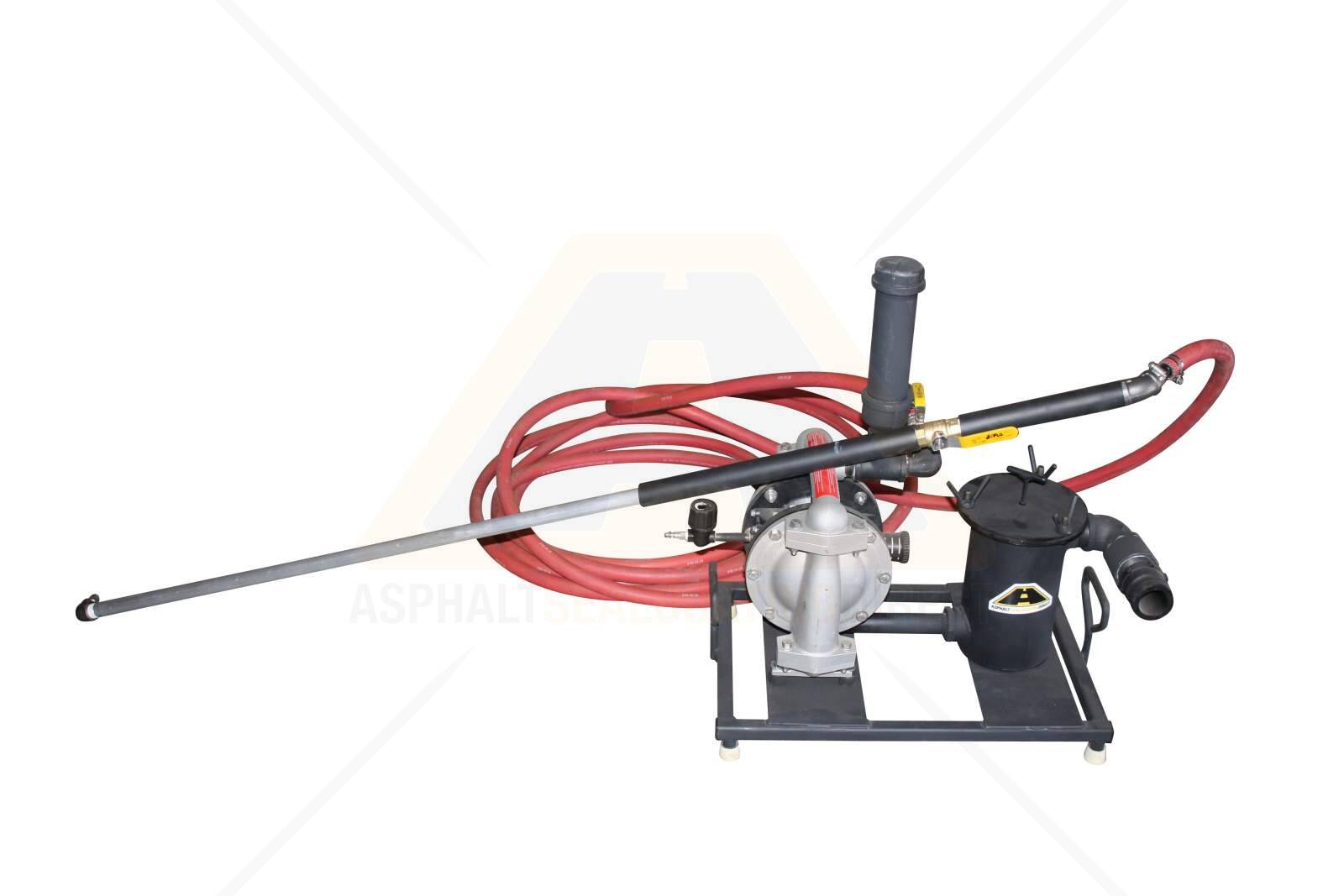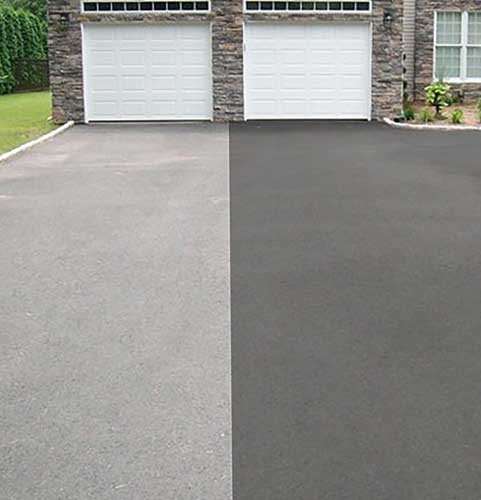Elevate Security and Allure: Angled Parking Area Solutions with Asphalt Sealing
Wiki Article
Warm Mix Asphalt: A Sustainable Solution for Pavement
Warm Mix Asphalt (HMA) has actually arised as a leading sustainable selection for sidewalk remedies, using a myriad of ecological benefits and ingenious modern technologies. As the need for green building methods grows, checking out the subtleties of HMA's sustainability can provide useful insights right into the future of pavement solutions.Environmental Advantages of Warm Mix Asphalt
Furthermore, Warm Mix Asphalt assists to alleviate city warm island impacts. Its dark shade absorbs sunshine, minimizing the amount of heat showed back into the atmosphere compared to lighter-colored sidewalks. This can lower ambient temperatures in metropolitan areas, reducing the demand for air conditioning and inevitably minimizing power consumption.
Additionally, Hot Mix Asphalt adds to improved stormwater management. Its permeable nature permits water to recharge and penetrate the sidewalk groundwater products, decreasing overflow and the threat of flooding. These environmental benefits make Hot Mix Asphalt a lasting selection for leading roadways and freeways.
Energy Performance in HMA Production
Is energy efficiency an important aspect in the production of Warm Mix Asphalt (HMA)? Absolutely. Energy plays a considerable role in the production of HMA, affecting both expense and environmental sustainability. One key element of energy efficiency in HMA production is using warm mix asphalt (WMA) innovations (angled parking). WMA enables the mixing and positioning of asphalt at lower temperature levels compared to conventional warm mix asphalt, causing lowered energy usage throughout production. This procedure not only reduces gas usage but likewise decreases greenhouse gas emissions, making it a more ecologically pleasant alternative.In addition, developments in plant innovations have resulted in more energy-efficient HMA production processes. Modern plants are made with attributes like recycled asphalt sidewalk (RAP) processing capacities, effective heater systems, and boosted insulation, all adding to energy savings. By optimizing power usage in HMA production, the market can decrease its carbon impact while keeping top quality pavement materials. Energy efficiency is, therefore, a critical factor to consider in making certain the sustainability of Warm Mix Asphalt manufacturing.
Recyclability of Warm Mix Asphalt
The recyclability of Hot Mix Asphalt (HMA) is an essential aspect of its sustainability and lasting environmental influence. HMA is among one of the most recycled products in the USA, with over 100 million lots of reclaimed asphalt pavement (RAP) being reused yearly in brand-new sidewalk building and construction. official source Reusing HMA supplies several environmental advantages, such as reducing the demand for virgin products, reducing energy usage throughout manufacturing, and lowering the amount of waste sent out to land fills.The process of recycling HMA entails milling the existing pavement, squashing it into smaller sized items, and blending it with brand-new accumulation and asphalt binder to produce a recycled mix. Overall, the recyclability of HMA plays a significant duty in advertising sustainable techniques within the pavement industry.

Long-Term Efficiency of HMA
Asphalt pavements demonstrate durability and durability over an extensive period, mirroring the lasting performance of Warm Mix Asphalt (HMA) The longevity of HMA can be credited to its capability to endure hefty website traffic tons, severe weather, and the effects of aging. Researches have actually shown that well-designed and appropriately built HMA pavements can last for 20 years or even more with regular upkeep. The key to maximizing the lasting performance of HMA hinges on using top quality products, following finest methods in construction, and applying efficient upkeep approaches. Correct drainage, routine evaluations, and timely repair work are necessary for protecting the structural stability of HMA pavements in time. In addition, advancements in HMA modern technology, such as the use of polymer-modified binders and cozy mix asphalt, have actually better boosted the longevity and longevity of HMA pavements. By focusing on top quality building and maintenance techniques, HMA continues to confirm itself as a cost-efficient and sustainable service for lasting sidewalk infrastructure.
HMA: Longevity and Sustainability
Demonstrating both sturdiness and sustainability, Warm Mix Asphalt (HMA) has come to be a keystone in the building Continue and construction of long-lasting pavement facilities - hot mix asphalt. HMA's resilience originates from its capability to hold up against heavy loads, extreme weather condition conditions, and high website traffic volumes, making it a reputable choice for roadways, freeways, and airport paths. The composition of HMA, which typically consists of accumulations, binder, and filler, plays a vital function in improving its longevity and resistance to damage
Moreover, HMA's sustainability depends on its recyclability and energy-efficient production process. The capacity to recycle recovered asphalt sidewalk (RAP) in brand-new HMA Click Here mixes lowers the need for virgin products and minimizes the environmental impact of pavement construction and upkeep. In addition, the energy performance of creating HMA hinges on its reduced mixing temperatures contrasted to various other pavement materials, leading to minimized energy usage and greenhouse gas exhausts.
Verdict
In final thought, hot mix asphalt (HMA) provides a sustainable option for pavement with its ecologically pleasant features. HMA's recyclability, power effectiveness in manufacturing, and long-term sturdiness make it an environmentally friendly selection for road building.
HMA is one of the most recycled products in the United States, with over 100 million bunches of recovered asphalt pavement (RAP) being reused each year in new sidewalk building and construction.The process of recycling HMA entails milling the existing sidewalk, crushing it into smaller pieces, and blending it with new aggregate and asphalt binder to create a recycled mix.Asphalt sidewalks demonstrate longevity and strength over a prolonged duration, mirroring the long-term efficiency of Warm Mix Asphalt (HMA) In addition, innovations in HMA modern technology, such as the usage of polymer-modified binders and cozy mix asphalt, have even more improved the resilience and longevity of HMA pavements. The ability to recycle reclaimed asphalt sidewalk (RAP) in new HMA mixtures lowers the demand for virgin materials and minimizes the ecological impact of sidewalk building and construction and upkeep.
Report this wiki page